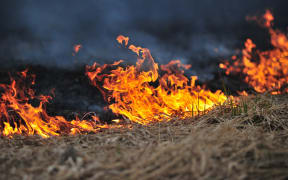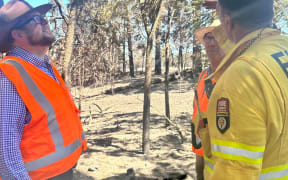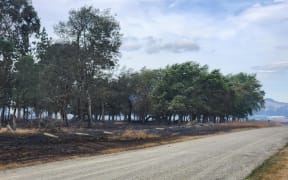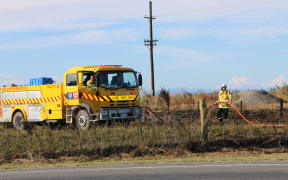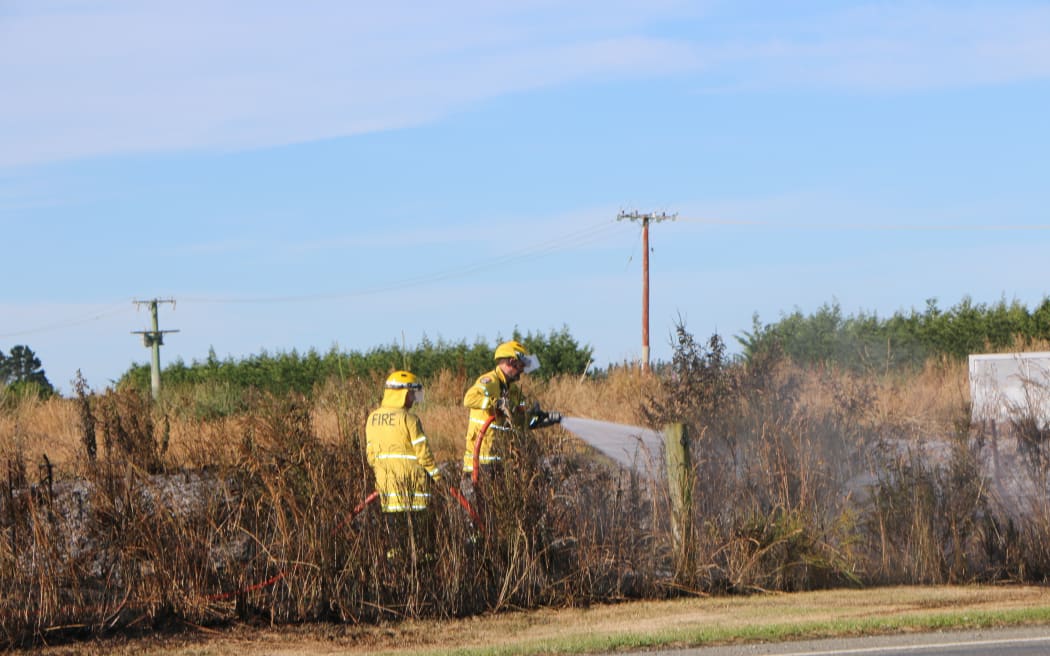
Firefighters fighting a series of fires along the railway line near Kirwee, west of Christchurch, on the evening of 7 January 2024. Photo: RNZ/ Adam Burns
Canterbury researchers hope models being built to better predict how wildfires will spread will help fire-fighters get ahead of severe blazes.
Two houses and a church were lost in one of the multiple scrub fires crews fought in North Canterbury in the last week.
Fire and Emergency has warned that hot, dry and windy conditions are raising the risk of wildfires across the motu.
University of Canterbury Associate Professor in atmosphere dynamics Marwan Katurji is creating modelling systems to give more accurate predictions of where large wildfires could spread as they burn, by incorporating weather changes driving fire behaviour.
Katurji said the systems used atmospheric and spatial predictions and could represent specific locations' real-time conditions, unlike current models, which did not account for local variable weather conditions.
"Ideally Fire and Emergency will use this technology to predict or re-analyse real-time movement of the fire so they can get ahead of where it is going, but fire engineers could also use this to improve building practices to protect against fire by understanding how fire moves and how turbulent wind impacts fire behaviour," he said.
The university said wildfire costs in New Zealand since 2017 had reached $82 million.
The new research aimed to protect communities against wildfires, and currently there was no theory for fire spread, Katurji said.
"It's really important to give a bit of a heads up in the next 12 hours or 24 hours where the fire will go; if it's going to impinge on a settlement, if they need to prompt any evacuations, so this is quite important information," he said.
"Previous studies assessing the future wildfire risk in Aotearoa New Zealand have found that climate change will increase fire risk in many regions."
Katurji said UC had been involved with wildfire research for almost a decade.
"The main questions we're asking are: Why do wildfires behave the way they behave? What is driving extreme fire behaviour? How do terrain and wind conditions really enable the erratic, unpredictable motion of wildfires?"
In a world-first last year, researchers generated fire whirls, also known as fire tornadoes, in Twizel to better understand extreme fire behaviour.
"These are the most unpredictable and undocumented types of fire, so being able to recreate them in a controlled setting gives the models real-world insights," Katurji said.
The team also conducted field-scale fire experiments where particular homogenous fuels, like gorse, stubble wheat, and wild pine were ignited and weather and fire behaviour were observed closely.
